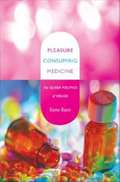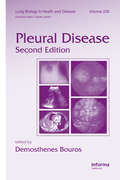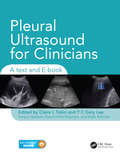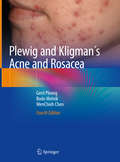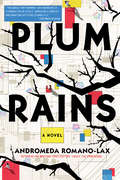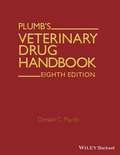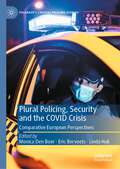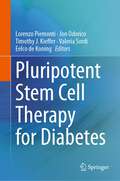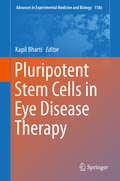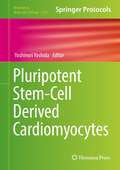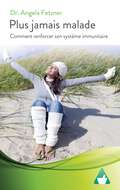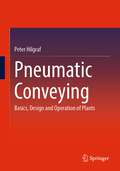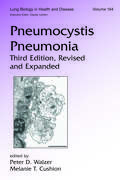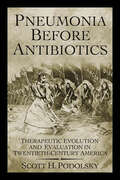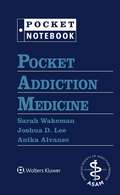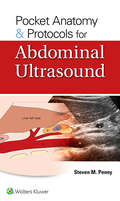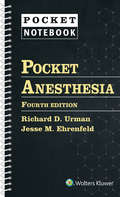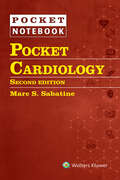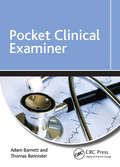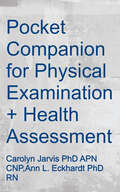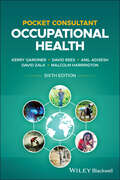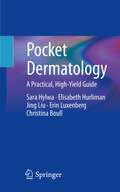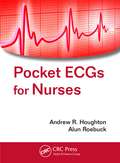- Table View
- List View
Pleasure Consuming Medicine: The Queer Politics of Drugs
by Kane RaceOn a summer night in 2007, the Azure Party, part of Sydney's annual gay and lesbian Mardi Gras, is underway. Alongside the party outfits, drugs, lights, and DJs is a volunteer care team trained to deal with the drug-related emergencies that occasionally occur. But when police appear at the gates with drug-detecting dogs, mild panic ensues. Some patrons down all their drugs, heightening their risk of overdose. Others try their luck at the gates. After twenty-six attendees are arrested with small quantities of illicit substances, the party is shut down and the remaining partygoers disperse into the city streets. For Kane Race, the Azure Party drug search is emblematic of a broader technology of power that converges on embodiment, consumption, and pleasure in the name of health. In Pleasure Consuming Medicine, he illuminates the symbolic role that the illicit drug user fulfills for the neoliberal state. As he demonstrates, the state's performance of moral sovereignty around substances designated "illicit" bears little relation to the actual dangers of drug consumption; in fact, it exacerbates those dangers. Race does not suggest that drug use is risk-free, good, or bad, but rather that the regulation of drugs has become a site where ideological lessons about the propriety of consumption are propounded. He argues that official discourses about drug use conjure a space where the neoliberal state can be seen to be policing the "excesses" of the amoral market. He explores this normative investment in drug regimes and some "counterpublic health" measures that have emerged in response. These measures, which Race finds in certain pragmatic gay men's health and HIV prevention practices, are not cloaked in moralistic language, and they do not cast health as antithetical to pleasure.
Pleural Disease
by Demosthenes BourosUpdated to reflect the latest scientific advances and technologies in the diagnosis and treatment of pleural diseases, this new Second Edition explores the structure and function of these diseases and malignancies, from tuberculosis and asbestos to pleurisy and pneumothorax. Edited by leading international authorities in pulmonary medicine, this co
Pleural Ultrasound for Clinicians: A Text and E-book
by Claire L Tobin Y C Gary LeeWith a large volume of ultrasound images and teaching videos, Pleural Ultrasound for Clinicians: A Text and E-book is a print and interactive digital resource that provides practical guidance for all those undertaking pleural ultrasound investigations and procedures. With clear, precise instructions for clinical practice, it will help clinicians:Re
Plewig and Kligman´s Acne and Rosacea
by Gerd Plewig Bodo Melnik WenChieh ChenThis book is a richly illustrated account of the clinical features, microscopic anatomy, and management of acne, acne-like disorders, and rosacea. The coverage includes all aspects of these diseases, from physiology to pathology, bacteriology, and endocrinology; special emphasis is placed on histopathology. Moreover, the full spectrum of pharmacological and physical methods of controlling the disorders are critically examined and the widely experienced team of authors present in detail their personal strategies for successful treatment. Since it was first published, Acne and Rosacea has become a well-known classic. This fourth edition has been completely revised and updated, with entirely new chapters on topics such as etiopathogenesis, auto-inflammatory acne syndromes, the role of nutrition, and novel therapies. The text is supplemented by selected references and a wealth of clinical and histopathological pictures, including additional high-definition photographs. The book is designed for all those physicians – dermatologists, general practitioners, pediatricians, gynecologists, pharmacologists, and surgeons – who must identify and treat the many different forms of acne and rosacea.
Plum Rains
by Andromeda Romano-LaxIn a tour-de-force tapestry of science fiction and historical fiction, Andromeda Romano-Lax presents a story set in Japan and Taiwan that spans a century of empire, conquest, progress, and destruction. 2029: In Japan, a historically mono-cultural nation, childbirth rates are at an all-time low and the elderly are living increasingly longer lives. This population crisis has precipitated the mass immigration of foreign medical workers from all over Asia, as well as the development of finely tuned artificial intelligence to step in where humans fall short. In Tokyo, Angelica Navarro, a Filipina nurse who has been in Japan for the last five years, works as caretaker for Sayoko Itou, a moody, secretive woman about to turn 100 years old. One day, Sayoko receives a present: a cutting-edge robot “friend” that will teach itself to anticipate Sayoko’s every need. Angelica wonders if she is about to be forced out of her much-needed job by an inanimate object—one with a preternatural ability to uncover the most deeply buried secrets of the humans around it. Meanwhile, Sayoko becomes attached to the machine. The old woman has been hiding secrets of her own for almost a century—and she’s too old to want to keep them anymore. What she reveals is a hundred-year saga of forbidden love, hidden identities, and the horrific legacy of WWII and Japanese colonialism—a confession that will tear apart her own life and Angelica’s. Is the helper robot the worst thing that could have happened to the two women—or is it forcing the changes they both desperately needed?
Plumb's Veterinary Drug Handbook Eighth Edition
by Donald C. PlumbThe Eighth Edition of Plumb's Veterinary Drug Handbook is an up-to-date edition of the most complete guide to drug dosing information for animals available, now with fewer dosages per indication, making it quicker and easier to make a dosage decision.
Plural Policing, Security and the COVID Crisis: Comparative European Perspectives (Palgrave's Critical Policing Studies)
by Monica Den Boer Eric Bervoets Linda HakThis book critically examines how countries across Europe have dealt with the COVID crisis from a policing and security perspective. Across the chapters, contributors from different countries examine the data, press coverage, and provide professional observations on how policing, law enforcement, police powers and community relations were managed. They focus on how security and governmental actors often failed to align with the formal scripts that were specifically designed for crisis-management, resulting in the wavering application of professional discretion and coercive powers. Their different approaches were evident: in some regions police were less dominantly visible compared to other regions, where the police used a top-down visible and repressive stance vis-à-vis public alignment with COVID rules, including the imposition of lockdown and curfews. Some contributors draw on data from the COROPOL (Corona Policing) Monitor which collated data on crime, plural policing and public order in Europe and around the world during the early phases of the COVID crisis. Overall, this book seeks to provide comparative critical insights and commentary as well as a practical and operational understanding of security governance during the COVID-19 crisis and the lessons learned to improve future preparedness.
Pluripotent Stem Cell Therapy for Diabetes
by Jon Odorico Lorenzo Piemonti Timothy J. Kieffer Valeria Sordi Eelco De KoningThis is a unique book containing comprehensive coverage of pluripotent stem cell therapies for the treatment of diabetes. The greatest enthusiasm for treatment lies in the possibility of using stem cells to overcome the limits of islet transplantation. Organized into six parts, this book covers the development and differentiation of beta cells, bioengineering, immunoescape, preclinical model and translational approaches, beta cell replacement, and disease modeling. This is an ideal book for scientists, researchers, and clinicians working in the area of stem cell technology in the treatment of diabetes.
Pluripotent Stem Cells in Eye Disease Therapy (Advances in Experimental Medicine and Biology #1186)
by Kapil BhartiThis book discusses applications of pluripotent stem cells to study eye disease in vitro and to create novel therapies for degenerative eye diseases. Chapters are contributed by experts in the field and cover such topics as the use of pluripotent stem cells in 2D and 3D engineering of ocular tissues for disease modelling and drug testing as well as approaches to replace degenerated RPE and photoreceptors in macular degeneration and retinitis pigmentosa. Pluripotent Stem Cells in Eye Disease Therapy presents a comprehensive discussion of basic science and clinical applications and is an indispensable resource for everyone from advanced graduate students to advanced professionals who want to learn about the potential of stem cell biology and its role in the field of retinal diseases.
Pluripotent Stem-Cell Derived Cardiomyocytes (Methods in Molecular Biology #2320)
by Yoshinori YoshidaThis volume provides methodologies for ES and iPS cell technology on the study of cardiovascular diseases. Chapters guide readers through protocols on cardiomyocyte generation from pluripotent stem cells, physiological measurements, bioinformatic analysis, gene editing technology, and cell transplantation studies. Written in the highly successful Methods in Molecular Biology series format, chapters include introductions to their respective topics, lists of the necessary materials and reagents, step-by-step, readily reproducible laboratory protocols, and tips on troubleshooting and avoiding known pitfalls. Authoritative and cutting-edge, Pluripotent Stem-Cell Derived Cardiomyocytes aims to help researchers set up experiments using pluripotent stem cell-derived cardiac cells.
Plus jamais malade: Comment renforcer son système immunitaire
by Dr Angela FetznerAvouons-le, le titre „Plus jamais malade“ peut sembler provocant. Vous avez probablement déjà remarqué que certaines personnes résistent, littéralement comme une forteresse, à toutes les contaminations alors que d’autres attrapent toutes les infections qui circulent. Un rhume est-il pour certains d’entre nous une conséquence inéluctable à l’approche d’une quantité suffisante de virus et de bactéries ? Bien sûr que non ! Il nous faut simplement donner à notre système immunitaire les bons outils et les moyens appropriés pour être en mesure de résister suffisamment aux virus et aux bactéries. En effet, il existe toute une série d’astuces et de thérapies simples et efficaces pour renforcer les défenses de l’organisme et ainsi édifier un rempart solide contre ces désagréables infections. Si vous suivez les mesures recommandées, vous pourrez repousser toutes les maladies liées aux refroidissements dans un délai étonnamment court. En même temps, vous sentirez votre forme et vos performances s’améliorer, et vous expérimenterez une toute nouvelle sensation de bien-être corporel.
Pmhnp-bc Certification Practice Q&a
by Springer Publishing CompanyPrepare for your Psychiatric-Mental Health Nurse Practitioner (Across the Lifespan) certification (PMHNP-BC™) exam with PMHNP-BC™ Certification Practice Q&A. With 700 high-quality questions and comprehensive rationales based on the most recent ANCC PMHNP-BC™ exam blueprint, this essential resource is designed to help you study your way: sharpen your specialty knowledge with 350 practice Q&A organized by exam domain and strengthen your test-taking skills with the 350-question practice test. Combined, it gives you everything you need to pass the first time, guaranteed. Know that you're ready. Know that you'll pass with Springer Publishing Exam Prep.
Pneumatic Conveying: Basics, Design and Operation of Plants
by Peter HilgrafBulk materials are processed and refined in many industrial plants. They are transported back and forth between the various process steps. If bulk materials are dust-fine to coarse-grained, they can be transported pneumatically through pipelines with flowing gas - over distances of several metres to several kilometres.This book introduces the basics of pneumatic conveying, the construction of plants and their operation. The first three chapters deal with the physical properties of the bulk material and the conveying gas as well as their behaviour in gas-solid systems. The following chapter describes the application of these basics in pneumatic conveying: starting with different flow forms, via processes at the plug, up to pressure loss in pneumatic conveying lines. The following sections are devoted, among other things, to calculation approaches for the transfer of test models to large-scale systems, as well as to modern dense-phase conveying methods in which material to be conveyed moves at low speed in the form of threads, plugs or flowing. Separate chapters deal with the design of pneumatic conveying systems and various forms and causes of their wear.The book offers calculation examples for many topics and is state of the art. It is aimed at engineers, plant constructors and operators of product lines with pneumatic conveying. They benefit from the author's decades of experience in the development and design of plants with new conveying processes.
Pneumocystis Pneumonia (Lung Biology in Health and Disease)
by Melanie T. Cushion Peter D. WalzerContinuing to serve as the definitive source on the subject, Pneumocystis Pneumonia offers a detailed update on the biology, pathogenesis, genetics, and immunology of Pneumocystis. This reference offers invaluable research and previously unpublished findings, and provides in-depth reviews on the development of new drugs, insights into host-pathogen
Pneumonia Before Antibiotics: Therapeutic Evolution and Evaluation in Twentieth-Century America
by Scott H. PodolskyPneumonia—Osler's "Captain of the Men of Death" and still the leading infectious cause of death in the United States—has until now received scant attention from historians. In Pneumonia Before Antibiotics, clinician-historian Scott H. Podolsky uses pneumonia's enduring prevalence and its centrality to the medical profession's therapeutic self-identity to examine the evolution of therapeutics in twentieth-century America. Focusing largely on the treatment of pneumonia in first half of the century with type-specific serotherapy, Podolsky provides insight into the rise and clinical evaluation of therapeutic "specifics," the contested domains of private practice and public health, and-as the treatment of pneumonia made the transition from serotherapy to chemotherapy and antibiotics—the tempo and mode of therapeutic change itself. Type-specific serotherapy, founded on the tenets of applied immunology, justified by controlled clinical trials, and grounded in a novel public ethos, was deemed revolutionary when it emerged to replace supportive therapeutics. With the advent of the even more revolutionary sulfa drugs and antibiotics, pneumonia ceased to be a public health concern and became instead an illness treated in individual patients by individual physicians. Podolsky describes the new therapeutics and the scientists and practitioners who developed and debated them. He finds that, rather than representing a barren era in anticipation of some unknown transformation to come, the first decades of the twentieth-century shaped the use of, and reliance upon, the therapeutic specific throughout the century and beyond. This intriguing study will interest historians of medicine and science, policymakers, and clinicians alike.
Pneumonia Before Antibiotics: Therapeutic Evolution and Evaluation in Twentieth-Century America
by Scott H. Podolsky“Uses [pneumonia] as a vehicle for examining the evolution of therapeutics in America between the ‘Golden Age of Microbiology’ and the ‘Age of Antibiotics.’”—IsisFocusing largely on the treatment of pneumonia in first half of the century with type-specific serotherapy, clinician-historian Scott H. Podolsky provides insight into the rise and clinical evaluation of therapeutic “specifics,” the contested domains of private practice and public health, and—as the treatment of pneumonia made the transition from serotherapy to chemotherapy and antibiotics—the tempo and mode of therapeutic change itself. Type-specific serotherapy, founded on the tenets of applied immunology, justified by controlled clinical trials, and grounded in a novel public ethos, was deemed revolutionary when it emerged to replace supportive therapeutics. With the advent of the even more revolutionary sulfa drugs and antibiotics, pneumonia ceased to be a public health concern and became instead an illness treated in individual patients by individual physicians.Podolsky describes the new therapeutics and the scientists and practitioners who developed and debated them. He finds that, rather than representing a barren era in anticipation of some unknown transformation to come, the first decades of the twentieth-century shaped the use of, and reliance upon, the therapeutic specific throughout the century and beyond. This intriguing study will interest historians of medicine and science, policymakers, and clinicians alike.“Podolsky’s scholarship is awesome, and his grasp of the philosophical and sociologic context of the issues considered make this an important work.” —New England Journal of Medicine“This thoroughly documented, carefully written book is a landmark analysis . . . It should be read by everyone who is involved in research and therapeutic development.” —JAMA
Pocket Addiction Medicine (Pocket Notebook Series)
by Joshua D. Lee Sarah E. Wakeman Anika A.H. AlvanzoA new volume in the bestselling Pocket Notebook series, Pocket Addiction Medicine delivers highly relevant coverage of this widespread and increasing health care problem in an easily portable source. Edited by physician leaders in Addiction Medicine, Drs. Sarah E. Wakeman, Joshua D. Lee, and Anika Alvanzo and co-published with the American Society of Addiction Medicine (ASAM), this handbook provides must-know information on everything from screening for and diagnosis of substance use disorder to managing intoxication and withdrawal, to ongoing treatment of substance use disorder, including caring for special populations—all designed for quick reference at the point of care. Using the popular, easy-access Pocket Notebook format, it puts key clinical information about a broad range of issues in addiction medicine at your fingertips in seconds.
Pocket Anatomy & Protocols for Abdominal Ultrasound
by Steven M. PennyPacking essential abdominal imaging protocols in a compact format, this handy reference makes it easy to access the most up-to-date protocols, organ-specific measurements, and echogenicities for abdominal sonography. Organized logically by the organs of the abdomen, this succinct, image-based quick-reference presents imaging and line drawings side-by-side to help you make confident, accurate observations.
Pocket Anesthesia (Pocket Notebook Ser.)
by Richard D. Urman Jesse M. EhrenfeldProviding fast access to the most relevant, evidence-based information in all areas of anesthesiology, Pocket Anesthesia, Fourth Edition, is a practical, up-to-date resource for residents, anesthesiologists, CRNAs, and medical students—both on the wards and in the operating room. This concise handbook, now spiral-bound, is designed for portability and quick reference, with information presented in a bulleted, outline format throughout. The Pocket Notebook Series format is ideal for today's fast-paced health care environment. Information is presented in a schematic, outline format, with diagrams and tables for quick, easy reference.
Pocket Cardiology
by Marc S SabatineWritten and edited by Dr. Marc S. Sabatine and a team of cardiologists from Brigham and Women’s Hospital and Harvard Medical School, the new second edition of Pocket Cardiology has been greatly expanded to be made even more indispensable for everyday use. Part of the highly popular and respected Pocket Notebook series, this essential guide puts vital clinical information about a broad range of issues in cardiovascular medicine at your fingertips in seconds.
Pocket Clinical Examiner (Pocket Ser.)
by Adam Barnett Thomas BannisterThis pocket-sized guide to clinical examination is ideal for medical students and junior doctors seeking a convenient handbook for use in busy clinical settings. It starts by discussing how to take a patient history. Each subsequent chapter focuses on a specific system or part of the body. The book covers the cardiovascular, respiratory, and abdominal systems. It discusses examination of the cranial nerves and the neurological system of the limbs. Specific chapters focus on the breast, skin, hand, shoulder, hip, and knee. The authors also discuss how to present findings and how to write a report.
Pocket Companion For Physical Examination And Health Assessment
by Carolyn Jarvis Ann L. EckhardtA concise, practical handbook for the assessment lab and the clinical setting, Jarvis’s Pocket Companion for Physical Examination & Health Assessment, 9th Edition makes it fast and easy to review essential assessment skills and techniques. You’ll conduct more effective exams by referring to summaries of examination steps, comparisons of normal versus abnormal findings, lifespan and cultural considerations, integration of QSEN safety competencies, and more than 250 full-color photos and drawings.
Pocket Consultant: Occupational Health
by David Rees Kerry Gardiner J. Malcolm Harrington Anil Adisesh David ZalkIn the newly revised Sixth Edition of Pocket Consultant: Occupational Health, an accomplished and distinguished team of researchers and practitioners deliver a fully updated overview of current occupational health practices. The book offers a complete, international perspective that includes discussions of issues like migrant working populations, and new chapters on occupational exposure in different industries and specific processes. Special issues such as working hours and shift work, alcohol and drug use testing, eHealth, military populations, fatigue, and sleep disorders are also discussed at length. Readers will also find: A thorough introduction to occupational health, including people involved, the roles of occupational health professionals, industrial processes, and health outcomes Comprehensive explorations of occupational health services at an international level, occupational diseases, and occupational infections Practical discussions of clinical evaluations, including pre-employment placement, fitness for work, health assessments, health surveillance, and medical records Examinations of medicolegal report writing and the legal and ethical aspects of occupational health In-depth examinations of occupational toxicology, occupational hygiene, chemical/physical/biological/psychosocial hazards, and the principles of risk assessment and risk management along with the latest on control toolkits A new companion website featuring flashcards and multiple-choice questionsPerfect for occupational hygienists, physicians, nurses, safety practitioners and anyone in a health and safety role, Pocket Consultant: Occupational Health will also earn a place in the libraries of general practitioners, medical students, nursing students, occupational therapists, physiotherapists, toxicologists, and occupational psychologists.
Pocket Dermatology: A Practical, High-Yield Guide
by Jing Liu Sara Hylwa Elisabeth Hurliman Erin Luxenberg Christina BoullThis pocketbook offers a quick one-stop reference for dermatologists and the dermatology resident. The pocketbook is written by dermatologists for dermatologists. It is full of essential dermatologic “pearls” in easy access, high yield format, delivering the must know essentials for hospital and clinic based dermatology. Tables and bulleted format help access crucial information quickly and there will be space for added notes for clinicians to personalize and enhance their pocketbook. Pocket Dermatology is a must-have resource for dermatology residents, dermatologists in clinic and on call who are supervising medical students or residents, and physicians who have patients with dermatologic concerns who will be consulting a dermatologist.
Pocket ECGs for Nurses
by Andrew R. Houghton Alun RoebuckWritten in plain language with clear explanations, bullet lists and summaries throughout, this book will benefit nurses as well as paramedics and other allied health professionals in recording and reading ECGs. The book begins by covering the basics of cardiac anatomy and physiology and how these relate to the ECG. It then guides nurses on how to perform a high-quality ECG recording, interpret it and make sense of common ECG abnormalities. The book also includes a guide to ambulatory and bedside monitoring and useful chapter summaries.
